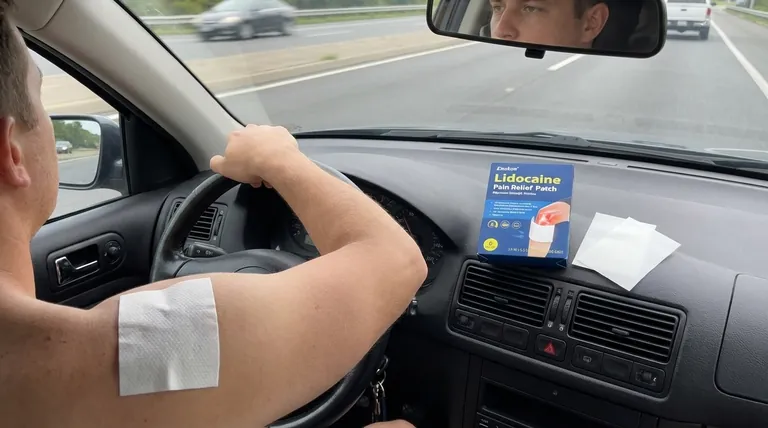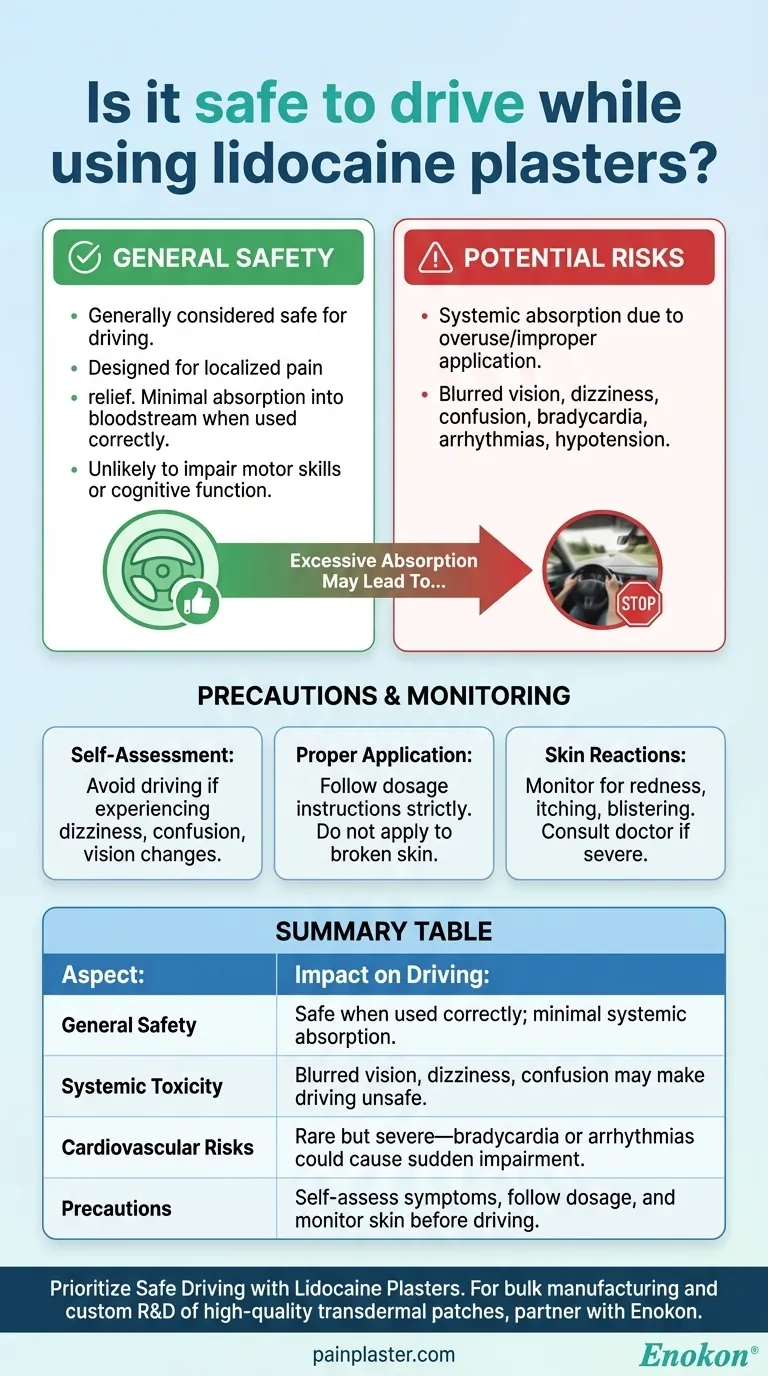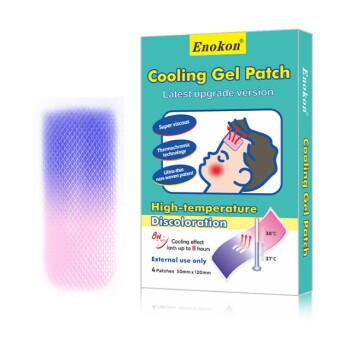Lidocaine plasters are generally considered safe for driving, as they are unlikely to impair motor skills or cognitive function. However, if systemic absorption occurs due to overuse or improper application, side effects like dizziness, blurred vision, or confusion may arise, making driving unsafe. Users should monitor for skin reactions or systemic symptoms and avoid driving if they feel impaired.

Key Points Explained:
-
General Safety for Driving
- Lidocaine plasters are designed for localized pain relief and typically do not affect driving ability.
- The medication is absorbed minimally into the bloodstream when used correctly, reducing the risk of systemic side effects.
-
Potential Side Effects That May Impair Driving
- Skin Reactions: Redness, itching, or blistering at the application site may cause discomfort but are unlikely to impair driving.
-
Systemic Toxicity (Rare but Serious):
- Overuse, application to broken skin, or prolonged use can lead to excessive absorption, causing:
- Blurred vision
- Dizziness
- Confusion
- These symptoms can significantly impair driving ability and require immediate medical attention.
- Overuse, application to broken skin, or prolonged use can lead to excessive absorption, causing:
-
Cardiovascular Risks (Rare but Severe)
- Although uncommon, systemic lidocaine toxicity may lead to:
- Bradycardia (slow heart rate)
- Hypotension (low blood pressure)
- Arrhythmias (irregular heartbeat)
- Such conditions could cause sudden dizziness or fainting, making driving dangerous.
- Although uncommon, systemic lidocaine toxicity may lead to:
-
Precautions Before Driving
- Self-Assessment: If experiencing any unusual symptoms (dizziness, confusion, vision changes), avoid driving.
- Proper Application: Follow dosage instructions strictly to prevent excessive absorption.
- Monitor Skin Reactions: If severe irritation occurs, remove the plaster and consult a doctor before resuming activities like driving.
-
When to Seek Medical Help
- If systemic symptoms (e.g., dizziness, confusion) develop, discontinue use and seek urgent care.
- Persistent skin reactions should also prompt medical evaluation to prevent complications.
Final Consideration: While lidocaine plasters are generally safe for driving, individual reactions vary. Always prioritize personal safety—if in doubt, refrain from driving until any concerning symptoms resolve.
Summary Table:
| Aspect | Impact on Driving |
|---|---|
| General Safety | Safe when used correctly; minimal systemic absorption. |
| Skin Reactions | Discomfort possible but unlikely to impair driving. |
| Systemic Toxicity | Blurred vision, dizziness, or confusion may make driving unsafe. |
| Cardiovascular Risks | Rare but severe—bradycardia or arrhythmias could cause sudden impairment. |
| Precautions | Self-assess symptoms, follow dosage, and monitor skin before driving. |
Prioritize Safe Driving with Lidocaine Plasters
If you or your organization distributes pain relief products, partner with Enokon—a trusted bulk manufacturer of transdermal patches and pain plasters. Our expertise ensures reliable, high-quality formulations tailored for healthcare and pharma brands. Need custom R&D or bulk supply? Contact us today to discuss your requirements!
Visual Guide

Related Products
- Lidocaine Hydrogel Pain Relief Patch for Pain Relief
- Natural Herbal Wormwood Patch Pain Plaster
- Capsaicin Chili Medicated Pain Relief Patches
- Far Infrared Deep Heat Relief Patches Medicated Pain Relief Patches
- Heating Pain Relief Patches for Menstrual Cramps
People Also Ask
- Is it safe to use lidocaine patches while breastfeeding? Expert Guidance for Nursing Mothers
- How is the lidocaine patch administered? A Step-by-Step Guide for Safe & Effective Pain Relief
- How does the lidocaine patch work? Targeted Relief for Nerve Pain Explained
- Are lidocaine patches safe to use during pregnancy? A Guide to Making an Informed Choice
- For what condition are lidocaine patches approved in the United Kingdom? A Guide to Postherpetic Neuralgia Treatment
















